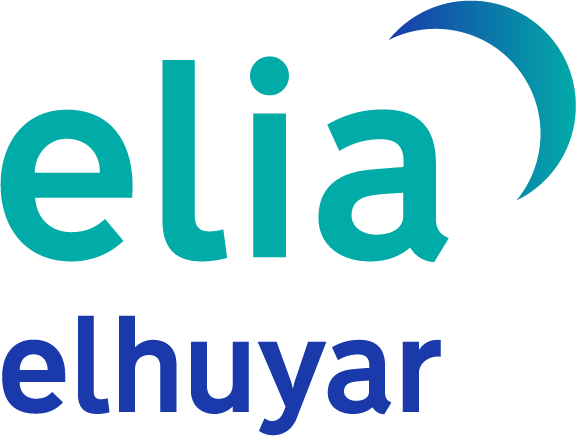The time that has not yet passed to see how history books will be received (perhaps we have to start saying “watch” in the place that was previously said “read”) last year has not been enough, but it has been enough to visualize the waves caused by the first waves of the sympathetic pleamars and basamars on the scenario of the Basque media. Concepts such as digitalization, media convergence, new business models…, on the one hand, and Euskera, on the other, already existed. Media ecosystems in minority languages were known here in the midst of the pandemic the virus SARS-CoV-2, followed by the crisis of COVID-19, the concept of the appearance of whirlpool, the infodemia later, a diagnosis that in one word gathers the symptoms and roots of the disease (ideal parallelism for the situation of the Basque media): syndemia. We are interested in looking at what is happening with a broad eye and acting quickly. Acceleration is repeated here and there, and that is the demand of these times, speed of response, rapid testing, rapid adaptation… or fusion. Because the waves come continuously. Live.
The Yearbook is a beacon for navigating these intense currents. It is intended to support these rains and bravas winter nights, as well as the shade or watchtower of temperate and endless summer strawberries. Eleven lights, eleven works have been collected in this year’s collection and 26 portraits of authors. It is also the collection and meeting point and the 2020 Basque Media Yearbook.
Firstly, two chronicles can be read, the first of which is addressed to our navel, the article by Igor Astibia Tejetxea, director of the Basque Media Association HEKIMEN, “Pandemic, the Basque media for the future”, and the second at international level, coordinator of the Basque Media Observatory and a member of the international 2020 group. We and the others, or the others and us, pretending to be complementary and inseparable looks.
The second part of the yearbook is the one written by the sector and the institutions. Four works make up the window of this year. First, we have placed the compass we have had in Basque communication to navigate the waves of the most difficult times, the science communicator of Elhuyar, Ana Galarraga Aiestaran, has written an article entitled “Communication of science in the age of synergy”, in which he explains in detail the necessity and value of the collaboration between scientific evidence and the media. Below is the report of a communication project that started taking its first steps in 2020: ‘KLAK gazte ahotsa’. Made by young people, and according to Aintzane Ariztegi Barrenetxea, based on current axes, podcast and social networks. Another important aspect is the adequacy of the content to the way it is done, and with this idea all its resources have been put into the hands of a single cooperative and organized into a single working group: Orio y Cárcava de Aia, Baleike de Zumaia, Uztarria de Azpeitia, Maxixatz de Azkoitia, Urola Kostako Hitza and Erlo Telebista. The director general of the brand UKT, Gorka Zabaleta Lopetegi, has written the details of unification in the article ‘We are what unites us the UKT (Communication Group of the Urola)’. In Bizkaia they have also worked together in 2020, communication and project management: In the article “Consolidating the communication projects of the local media in Bizkaia by improving its management”, the account is taken of what was done by the Director General of the Basque Country of the Provincial Council of Bizkaia, Xabier Arauzo Uriarte, the manager of TOKIKOM, Alaki Artolazabal Amilleta, and the Chief of the Administrator of the In addition to the steps taken, testimonies from two media outlets are collected: Anboto and Drogetenitturri, two projects and two realities.
In the third part of the 2020 Yearbook we gather the five largest and most substantial studies of this year. ‘Presence of women in the Basque media: Under the title “Results of the GMMP 2020 monitoring in Hego Euskal Herria”, in its seventh article, Global Media Monitoring Project has worked on the analysis and results of the monitoring in the Southern Basque Country of 2020, focusing especially on the media in Basque with the aim of knowing what the attention and presence of women in our usual media is like. A photograph that is far from reality, or what is the same, a painful distorted reality. Tania Arriaga Azkarate, Itxaso Fernández Astobiza, Marian Gonzalez Abrisketa, Arantza Gutierrez Paz and Andoni Iturbe Tolosa, teaching and research staff of the Department of Audiovisual Communication and Advertising of the UPV/EHU, with the participation of the research group in the media Visibility of women.
The eighth article refers to television, specifically the subtitling plan of Euskal Telebista, or the lack of strategy as demonstrated by the author: Marijo Deogracias Horrillo, from the research group NOR of the UPV/EHU, has signed the work “An inclusive ETB environment for the Basque Country?”, with the clear objective of defending and demonstrating that ETB should take advantage of the technological and accessibility tools used in audiovisual translation to provide access to the minority language without discrimination and on equal opportunities.
Article 9 is entitled ‘The virus that stirred up audiovisual consumption among young people’. In addition to Edorta Arana Arrieta, a member of the Applika+ and Solidary research projects, and belonging to the NOR research group of the UPV/EHU, they signed the teamwork: Asier Amezaga Etxebarria, Maite Egia Gutierrez, Maialen Goirizelaia Altuna, Naia Laka Arrizubieta, Iraitz Madariaga Etxebarria, Blanca Miguelez Juan, Bea Narbaiza Amillategi and Itziar Zorita Agirre. In the last year marked by COVID-19, the evolution of the digital consumption habits of young people and the weight that audiovisual media have had and have.
The tenth work is written by Josu AzpilhghLabaka of CodeSyntax on one of the most significant phenomena of last year, such as digital audiences or the historic growth of digital media audiences in Basque. The details behind the rounded numbers can be read in the work “Websites of Hekimen in 2020”, but they are as follows: In 2020, 40.8 million performances were made on Hekimen"s web pages, 43% more than in the previous year; media insertions in Basque -112 thousand daily. A greeting barrier and a confirmation mark.
The eleventh article is by Josu Amezaga Albizu, from the research group NOR of the UPV/EHU, asked with a question: ‘New opportunities from Europe for the Basque media?’ In fact, by the end of 2020 the European Commission adopted a new plan to influence media policy, focusing for the first time on information spaces and structures. The article describes the details of the Plan, as well as some points of interest from the point of view of the Basque media. A reading that serves to reflect on communication policies in the Basque Country.
In addition to these eleven works, this year’s collection includes a final special chapter: A collection of studies published under the title “Communication in Basque and COVID-19” at the vaccine observatory in the spring of 2020. So that it also remains on paper what we once launched on the net. The reader will find seven brief research studies: ‘Television in Basque at the time of COVID-19’, ‘We illustrated ourselves by clicking on (Euskaraz)’, ‘The consumption of young people at the time of COVID-19’, ‘Television in Basque at the height of crisis’, ‘Koronavirus has returned to Euskal Telebista the character of public service’, ‘COVID-19 and science: contribution of education.
These are the elements of the Basque Media Yearbook 2020. Perhaps one of the few assurances in these changing times is that the sympathetic pleamars and basamars will continue their course. Therefore, let the Yearbook (and the Observatory) be the lighthouse to survive without getting dizzy between the waves and reaching the rhythm.


